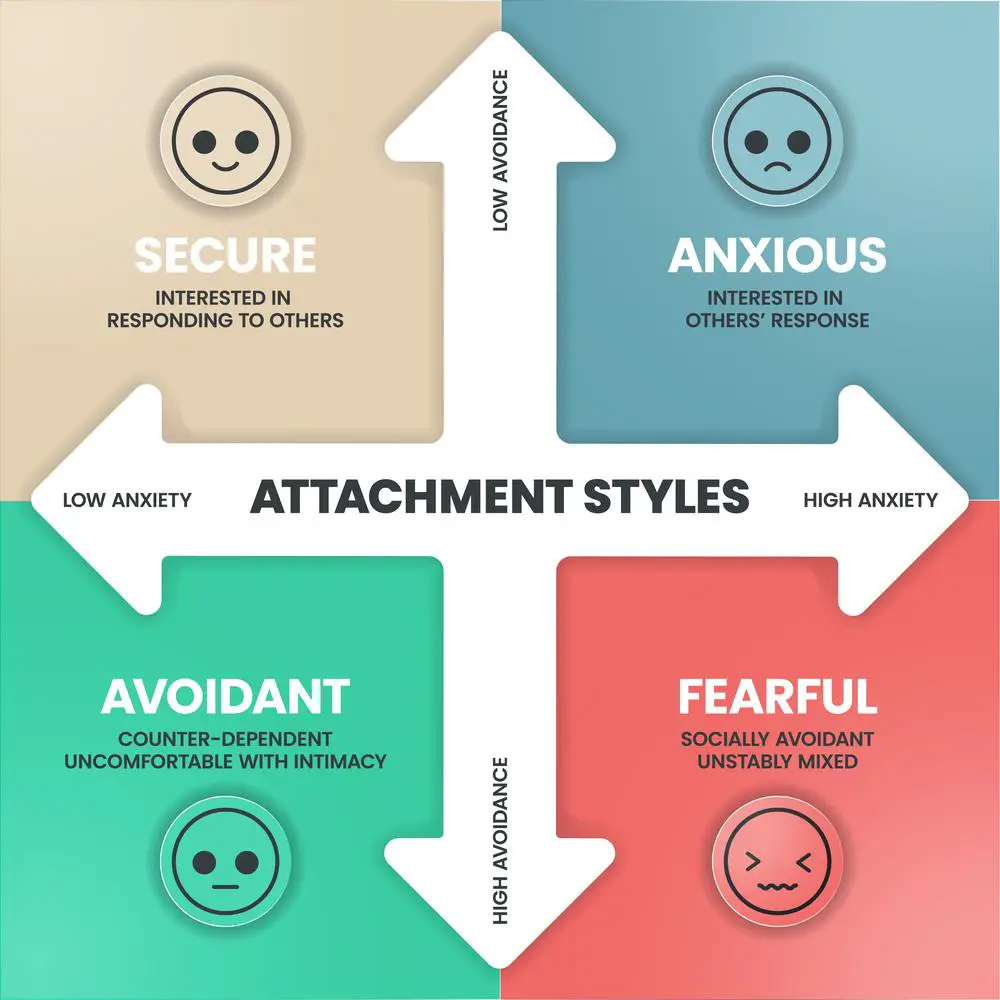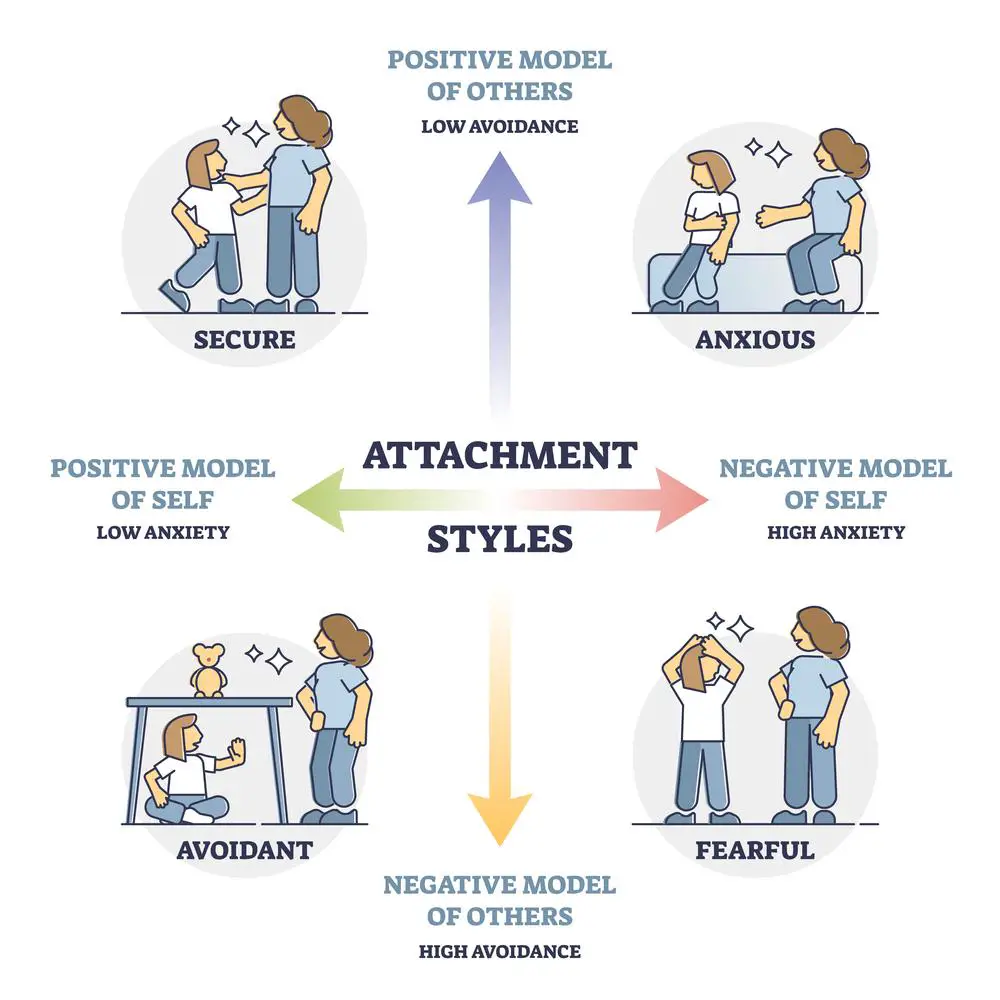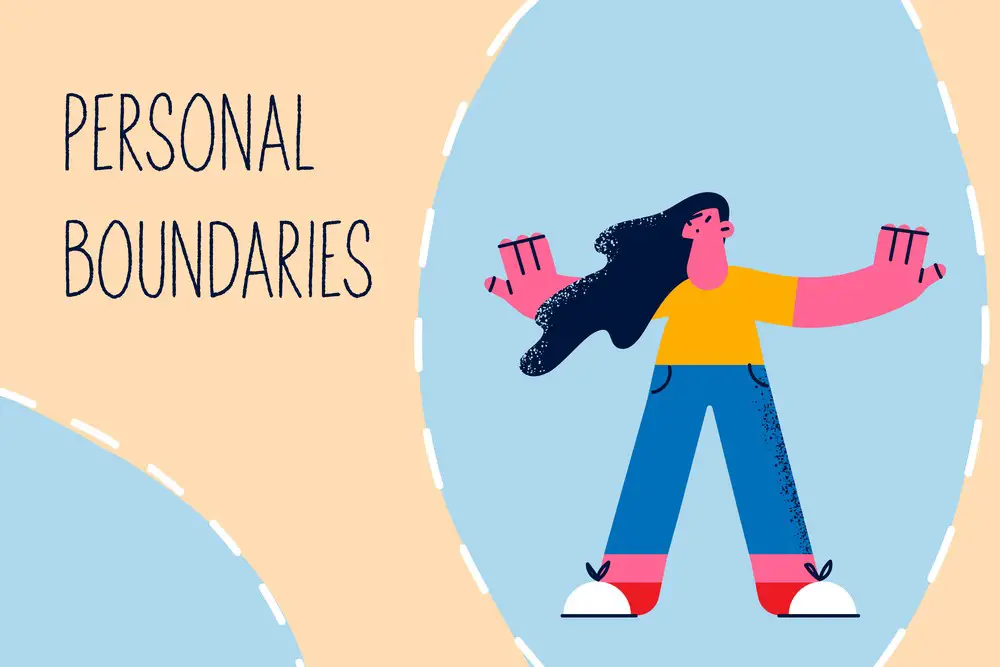In a world full of diverse personalities and attachment styles, understanding the signs of love can be challenging, especially when it comes to a partner with a fearful-avoidant attachment style. This article aims to shed light on the distinctive ways that fearful-avoidant individuals express their love and provide guidance on navigating the complexities of their relationships.
Fearful-avoidant individuals may shy away from deep emotional connections due to past experiences, and they may find it challenging to trust others. However, when they do fall in love, their behaviors and actions can hint at the depth of their feelings. Recognizing the unique signs that a fearful-avoidant partner loves you will help you better understand their needs, foster a stronger connection, and communicate more effectively.
Key Takeaways
- Identifying the subtle signs of love from a fearful-avoidant partner can strengthen your relationship.
- Fearful-avoidant partners value trust and may gradually open up when they feel secure in their relationship
- Supporting a fearful-avoidant partner involves patience and understanding while encouraging open communication
Recognizing the Whispers of Love: 10 Signs from a Fearful-Avoidant Heart
- Tentative Steps towards Vulnerability:
- Their journey towards vulnerability might echo the soft rustle of autumn leaves rather than a booming announcement.
- A Slow-Burning Trust:
- Trust with them is a delicate flower, blossoming slowly yet beautifully.
- Engagement in Your World:
- Their curiosity about your life is a tender step towards intertwining your worlds.
- Sudden Withdrawals:
- Understand that their sudden retreats are not about you but about their dance with fear.
- Efforts to Communicate:
- Their efforts to voice their feelings, though hesitant, are precious tokens of trust.
- Respect for Your Boundaries:
- Their respect for your boundaries is a love note to your individuality.
- Moments of Tender Care:
- The unspoken care in their actions is a silent sonnet of love.
- Seeking Reassurance:
- Their seeking of reassurance is a soft echo of their desire for security and love.
- Growing Comfort:
- The ease that grows with time in your presence is a warm testament to love.
- Willingness to Work Through Challenges:
- Facing the winds of challenges together is a bold declaration of love and trust.
Nurturing the Fragile Blossoms of Love: Tips for the Journey
- Patience is a Virtue:
- Your patience is a soft cushion for their fears.
- Open Communication:
- A culture of open dialogue is like a gentle breeze, clearing the fog of fears.
- Seek Understanding:
- A dive into understanding their attachment style can foster a beautiful synchrony.
The unfolding narrative of love with a fearful-avoidant partner is a tender journey of understanding, patience, and gentle nurturing. Each small sign of love is a step towards a more profound, meaningful communion, where love finds a way to bloom amidst the meandering paths of fear and desire.
Understanding Fearful-Avoidant Attachment Style
When it comes to attachment styles, it’s essential to understand the concepts behind them. Fearful-avoidant attachment is a unique style that emerged from John Bowlby’s groundbreaking work on attachment theory. If you’re dealing with someone who has a fearful-avoidant attachment style, it can be challenging to determine whether they love you or not. In this section, we will discuss some crucial aspects of the fearful-avoidant attachment style to help you better understand their behavior.
Fearful-avoidant attachment, also known as disorganized attachment, is an insecure attachment style. Individuals with this style crave love, closeness, and connection, but at the same time, they fear and avoid it. This internal conflict often leads to inconsistent and confusing behavior that can puzzle their friends and romantic partners.
There are a few reasons why someone might have a fearful-avoidant attachment style:
- They experienced unstable or inconsistent caregiving during their childhood.
- They faced adverse childhood experiences such as abuse or neglect.
- They struggle with a deep sense of unworthiness or fear of abandonment.
It’s essential to remember that people with fearful-avoidant attachment styles aren’t choosing to behave this way. It’s a conditioned response from their early life experiences, which affects how they form and maintain relationships. But don’t worry. With understanding, patience, and care, it is possible to build a healthy relationship with someone who has a fearful-avoidant attachment style.
To help you in your journey, consider the following strategies:
- Foster open and honest communication with your partner.
- Be patient and understanding with their fears and emotions.
- Create a safe and nurturing environment to build trust.
- Encourage them to seek therapy or counseling to work on their attachment issues.
By understanding the fearful-avoidant attachment style, you can better navigate the complex emotions and behaviors your loved one may display. Remember to approach the relationship with empathy, patience, and care, as these qualities will help you forge a deeper connection and support your partner’s growth and healing.
Signs of Love in Fearful-Avoidant Partners
Intimacy and Emotional Connection
Fearful-avoidant partners may struggle with trust and emotional intimacy, but when they love you, they will try to create an emotional bond. They might share their feelings and thoughts with you more often and might seek your comfort and support. In these moments, they truly value the closeness and connection you’ve built together.
Commitment and Dependence
Despite their fears, a loving, fearful-avoidant partner will commit to you. They might even prioritize your needs and adjust their schedules to be there for you. Although they generally prefer their alone time, their willingness to invest time and energy in your relationship shows their true feelings.
Affection and Loving Gestures
Fearful-avoidant individuals are wary of rejection, but when they love you, they display affection through loving gestures. They may surprise you with small acts of love, like compliments, gifts, or physical touch. Appreciating and reciprocating their affection can make them feel safe and more confident in your bond.
Efforts in Communication
Open and honest communication is essential in any relationship, and you’ll notice a loving fearful-avoidant partner genuinely trying to improve this aspect. They might initiate conversations, actively participate in discussions, and even express their emotions more comfortably. It’s important to encourage this behavior to deepen your connection.
Openness and Vulnerability
When a fearful-avoidant person loves you, they will slowly allow themselves to be vulnerable. They might reveal their insecurities, fears, and past experiences that shaped them. By creating a safe and understanding environment, you can help them overcome their barriers, leading to a stronger, more meaningful relationship.
Fearful-Avoidant Partners in Relationships
Being in a relationship with someone who has a fearful, avoidant attachment style can be challenging. However, with understanding and patience, you can help your partner feel secure and loved. In this section, we’ll discuss key areas to focus on when navigating relationships with fearful, avoidant partners.
Navigating Trust Issues
Trust can be difficult for fearful, avoidant individuals, as their past experiences may have caused them to be cautious in forming close bonds. It’s essential to:
- Be consistent: Show your partner you’re reliable by following through with plans and promises.
- Communicate openly: Discuss each other’s feelings, fears, and insecurities to build trust in the relationship.
- Be patient: Your partner may need extra time to trust you; understand that this is not a personal reflection on your character.
Key Takeaway: Being consistent, open, and patient will help you navigate trust issues with your fearful, avoidant partner.
 Preserving Personal Space
Preserving Personal Space
Fearful, avoidant partners may have a strong need for personal space and independence. Be mindful of this by:
- Respecting boundaries: Encourage an open dialogue about each other’s needs for space and respect them.
- Giving space when needed: Allow your partner time alone or pursue individual activities when they feel overwhelmed.
Key Takeaway: Respecting boundaries and giving space when needed will create a healthier relationship with your fearful, avoidant partner.
Handling Emotional Distance
It’s common for fearful, avoidant partners to become emotionally distant to protect themselves from vulnerability. Here’s how you can handle it:
- Don’t take it personally: Understand that emotional withdrawal is a coping mechanism for your partner and not a reflection of your relationship.
- Offer reassurance: Gently remind your partner that you’re there for them and care about their well-being.
- Seek professional help: If emotional distance becomes a pervasive issue in your relationship, consider seeking couples’ therapy or counseling for guidance.
Key Takeaway: Provide reassurance and support to address emotional distance issues in your relationship with a fearful avoidant partner.
 Supporting a Fearful-Avoidant Partner
Supporting a Fearful-Avoidant Partner
Building Trust
To support a fearful-avoidant partner, it’s essential to build trust. Establishing a secure foundation in your relationship can make a difference for them. You can:
- Be consistent in your actions and words
- Follow through on your promises
- Maintain open and honest communication
Demonstrate your reliability and dependability through your actions, and your partner will begin to trust you more over time.
Providing Comfort and Safety
Fearful-avoidants crave comfort and safety in their relationships. It’s essential to create a safe environment for them to express their thoughts and feelings without judgment. To do this, you can:
- Offer a listening ear when they need to talk
- Reassure them of your love and commitment
- Create a warm and welcoming atmosphere at home
As you provide comfort and safety, your partner will feel more at ease with you and the relationship.
Practicing Patience and Empathy
Supporting a fearful-avoidant partner involves a great deal of patience and empathy. They may struggle with vulnerability and fear of intimacy, but it’s crucial to remain understanding. You can practice this by:
- Giving them space when they need it
- Not taking their distancing personally
- Acknowledging their feelings and validating their emotions
Remember that a deep-rooted fear often drives their behavior, so support them in their journey toward self-awareness and emotional growth. Ultimately, your patience and empathy will significantly contribute to a stronger bond between you and your partner.
By following these strategies, you’ll be well on your way to effectively supporting your fearful-avoidant partner.
Getting Professional Help
Seeking professional help can greatly benefit you and your fearful-avoidant partner. Therapy or relationship coaching can provide you with the tools and strategies to navigate the challenges of your relationship. Let’s discuss a few ways professional help can support your journey.
Therapists: They are trained professionals who can assist you with understanding the underlying reasons for your partner’s attachment style. A therapist can help you both gain insight and work towards creating a more secure attachment.
Relationship Coaches: These experts focus on providing guidance and support in building healthy, fulfilling, and loving relationships. They can help you develop communication strategies, improve emotional support, and cultivate a strong connection.
When searching for professional help, find someone who specializes in attachment-related issues. It’s important to feel comfortable with your chosen professional, so take your time in making this decision.
Points to Consider:
- Collaborative Efforts: Be open to attending therapy or coaching sessions together. This shows your dedication to improving the relationship and can foster a deepened understanding of each other’s perspectives.
- Individual Therapy: Encourage your partner to seek individual therapy. This can help them confront past traumas that may contribute to their current attachment style. Make sure to offer your support, boosting their confidence in seeking help.
- Practice Patience: As with any progress, change takes time. When you enlist professional help, know that it is a step-by-step process. Be patient with yourself and your partner as you learn and grow.
Remember, even with professional help, overcoming attachment issues can be challenging. However, with dedication, love, and support, it’s possible to foster a healthy and secure relationship.
Conclusion
Developing a secure bond with a fearful-avoidant partner may feel challenging, but it’s possible with persistence and understanding. In your partnership, focus on fostering trust and open communication to create a safe space for both of you.
When you notice the signs of love from a fearful-avoidant person, such as making the first move, sharing personal secrets, or displaying vulnerability, acknowledge their bravery in taking these steps. Remember, it takes courage for them to experience closeness and conquer their fear of rejection.
As you navigate your relationship, keep these tips in mind:
- Patience: Give your partner time to open up and reveal their feelings at their own pace.
- Presence: Be consistently present and reliable in your partner’s life, reassuring them of your intentions and commitment.
- Active Listening: Listen attentively to your partner’s thoughts and concerns; this will help them feel valued and understood.
- Encouragement: Support their growth and healing by providing a nurturing environment celebrating their accomplishments and efforts.
Lastly, treasure the moments of connection and intimacy that you share, as these experiences hold the potential to strengthen your bond and brighten your journey together. Through empathy, understanding, and love, you can cultivate a fulfilling partnership with your fearful-avoidant partner.
Frequently Asked Questions
What are the signs a fearful avoidant is falling in love?
When a fearful avoidant starts falling in love, it might be challenging to identify the signs immediately. Some key indicators include:
- Prioritizing you in their life
- Initiating communication more frequently
- Expressing affection through actions rather than words
- An all-or-nothing approach to the relationship, sometimes alternating between closeness and distance
How does a fearful avoidant express their feelings?
Fearful avoidants tend to express their feelings through actions rather than words. They may show love by doing things for you, being there when needed, or providing physical affection. However, they might shy away from directly expressing their emotions verbally.
How can you tell if an avoidant partner is truly in love?
It’s not always easy to tell if an avoidant partner is genuinely in love, but looking for consistent patterns is key. They may:
- Prioritize you even when they’re afraid
- Initiate communication and reach out to connect
- Be more willing to discuss emotions or engage in emotional intimacy than they did before
What happens when a fearful avoidant opens up?
When a fearful avoidant begins to open up, they likely experience a mix of relief and anxiety. On the one hand, they feel relieved after sharing their emotions, but on the other hand, they worry about being judged or abandoned. During this time, it’s crucial to be understanding and patient with them.
How do you know if an avoidant person is emotionally invested?
Here are some ways to tell if an avoidant person is emotionally invested:
- They consistently prioritize you and make time for you
- They initiate communication and connect with you without hesitation
- They become more comfortable engaging in emotional conversations and discussing their feelings over time
What changes in behavior indicate a fearful avoidant attachment in love?
When a fearful avoidant begins to fall in love, they might display the following behavior changes:
- Greater willingness to engage in emotional intimacy
- Higher frequency of communication and initiation
- Prioritizing you in their life despite their fears
- Gradually increasing trust and openness in the relationship
- The Burnout Epidemic: Why We’re All Feeling Overwhelmed and How to Cope - February 9, 2024
- How to Live a Peaceful Life - February 9, 2024
- Useful Information You Should Know About Health Screenings - February 8, 2024
This site contains affiliate links to products. We will receive a commission for purchases made through these links.



 Preserving Personal Space
Preserving Personal Space Supporting a Fearful-Avoidant Partner
Supporting a Fearful-Avoidant Partner
